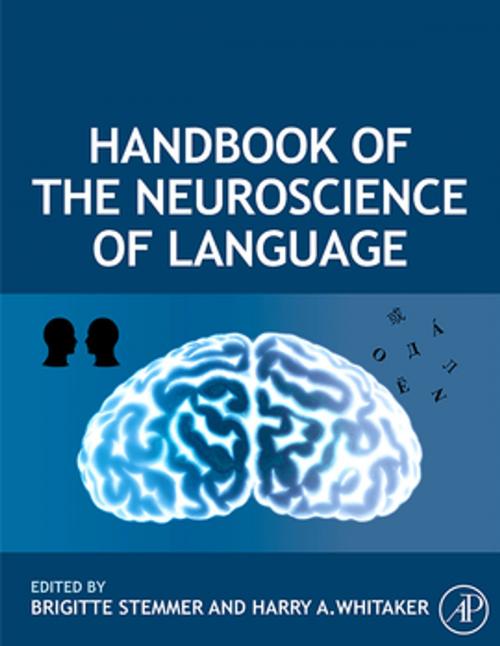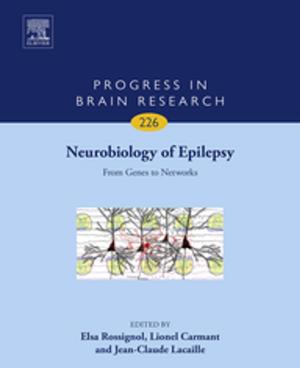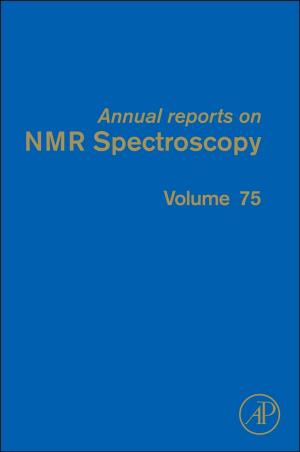Handbook of the Neuroscience of Language
Nonfiction, Reference & Language, Language Arts, Linguistics, Health & Well Being, Psychology, Cognitive Psychology, Science & Nature, Science| Author: | ISBN: | 9780080564913 | |
| Publisher: | Elsevier Science | Publication: | April 29, 2008 |
| Imprint: | Academic Press | Language: | English |
| Author: | |
| ISBN: | 9780080564913 |
| Publisher: | Elsevier Science |
| Publication: | April 29, 2008 |
| Imprint: | Academic Press |
| Language: | English |
In the last ten years the neuroscience of language has matured as a field. Ten years ago, neuroimaging was just being explored for neurolinguistic questions, whereas today it constitutes a routine component. At the same time there have been significant developments in linguistic and psychological theory that speak to the neuroscience of language. This book consolidates those advances into a single reference.
The Handbook of the Neuroscience of Language provides a comprehensive overview of this field. Divided into five sections, section one discusses methods and techniques including clinical assessment approaches, methods of mapping the human brain, and a theoretical framework for interpreting the multiple levels of neural organization that contribute to language comprehension. Section two discusses the impact imaging techniques (PET, fMRI, ERPs, electrical stimulation of language cortex, TMS) have made to language research. Section three discusses experimental approaches to the field, including disorders at different language levels in reading as well as writing and number processing. Additionally, chapters here present computational models, discuss the role of mirror systems for language, and cover brain lateralization with respect to language. Part four focuses on language in special populations, in various disease processes, and in developmental disorders. The book ends with a listing of resources in the neuroscience of language and a glossary of items and concepts to help the novice become acquainted with the field.
Editors Stemmer & Whitaker prepared this book to reflect recent developments in neurolinguistics, moving the book squarely into the cognitive neuroscience of language and capturing the developments in the field over the past 7 years.
- History section focuses on topics that play a current role in neurolinguistics research, aphasia syndromes, and lesion analysis
- Includes section on neuroimaging to reflect the dramatic changes in methodology over the past decade
- Experimental and clinical section reflects recent developments in the field
In the last ten years the neuroscience of language has matured as a field. Ten years ago, neuroimaging was just being explored for neurolinguistic questions, whereas today it constitutes a routine component. At the same time there have been significant developments in linguistic and psychological theory that speak to the neuroscience of language. This book consolidates those advances into a single reference.
The Handbook of the Neuroscience of Language provides a comprehensive overview of this field. Divided into five sections, section one discusses methods and techniques including clinical assessment approaches, methods of mapping the human brain, and a theoretical framework for interpreting the multiple levels of neural organization that contribute to language comprehension. Section two discusses the impact imaging techniques (PET, fMRI, ERPs, electrical stimulation of language cortex, TMS) have made to language research. Section three discusses experimental approaches to the field, including disorders at different language levels in reading as well as writing and number processing. Additionally, chapters here present computational models, discuss the role of mirror systems for language, and cover brain lateralization with respect to language. Part four focuses on language in special populations, in various disease processes, and in developmental disorders. The book ends with a listing of resources in the neuroscience of language and a glossary of items and concepts to help the novice become acquainted with the field.
Editors Stemmer & Whitaker prepared this book to reflect recent developments in neurolinguistics, moving the book squarely into the cognitive neuroscience of language and capturing the developments in the field over the past 7 years.
- History section focuses on topics that play a current role in neurolinguistics research, aphasia syndromes, and lesion analysis
- Includes section on neuroimaging to reflect the dramatic changes in methodology over the past decade
- Experimental and clinical section reflects recent developments in the field















